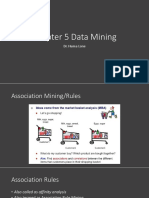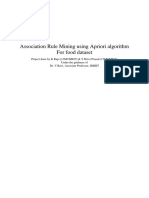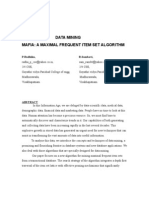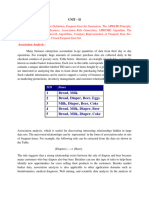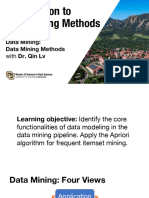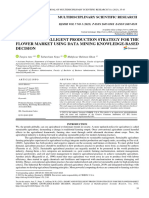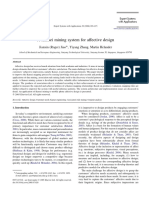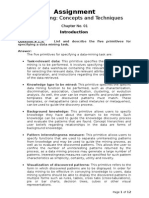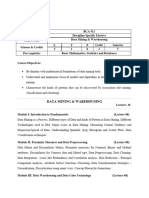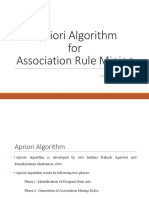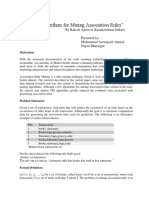0% found this document useful (0 votes)
30 views6 pagesFrequent Pattern Mining With Associations: Lesson Introduction
The document discusses frequent pattern mining, focusing on the identification of frequent itemsets, subsequences, and substructures within large datasets, particularly in the context of market basket analysis. It highlights the importance of discovering associations among items to inform business decisions and marketing strategies, using the Apriori algorithm as a method for efficient mining of frequent itemsets. The document outlines the process of generating association rules from frequent itemsets, emphasizing the significance of support and confidence measures in evaluating the strength of these rules.
Uploaded by
gihanisa.singerslCopyright
© © All Rights Reserved
We take content rights seriously. If you suspect this is your content, claim it here.
Available Formats
Download as PDF, TXT or read online on Scribd
0% found this document useful (0 votes)
30 views6 pagesFrequent Pattern Mining With Associations: Lesson Introduction
The document discusses frequent pattern mining, focusing on the identification of frequent itemsets, subsequences, and substructures within large datasets, particularly in the context of market basket analysis. It highlights the importance of discovering associations among items to inform business decisions and marketing strategies, using the Apriori algorithm as a method for efficient mining of frequent itemsets. The document outlines the process of generating association rules from frequent itemsets, emphasizing the significance of support and confidence measures in evaluating the strength of these rules.
Uploaded by
gihanisa.singerslCopyright
© © All Rights Reserved
We take content rights seriously. If you suspect this is your content, claim it here.
Available Formats
Download as PDF, TXT or read online on Scribd
/ 6








